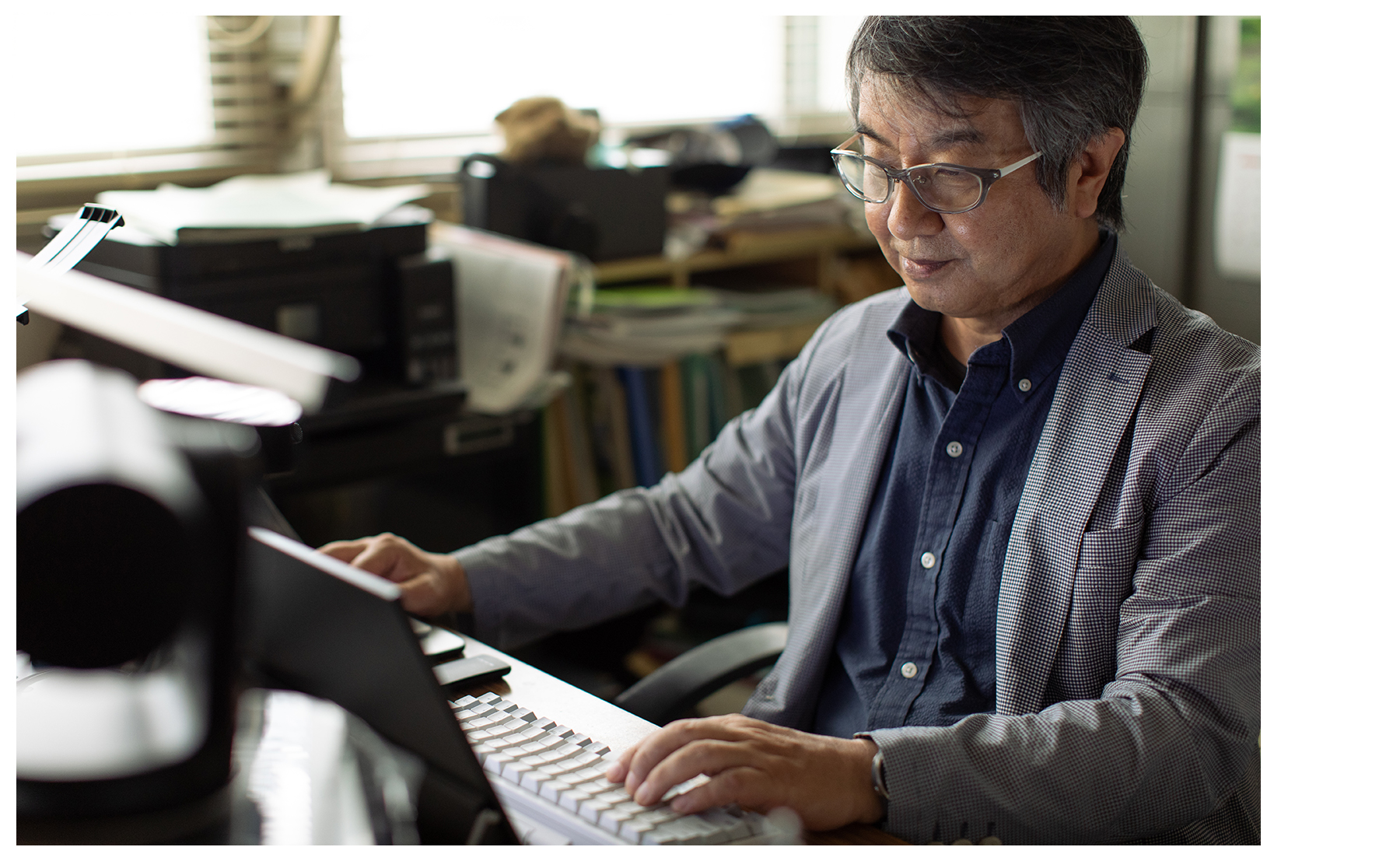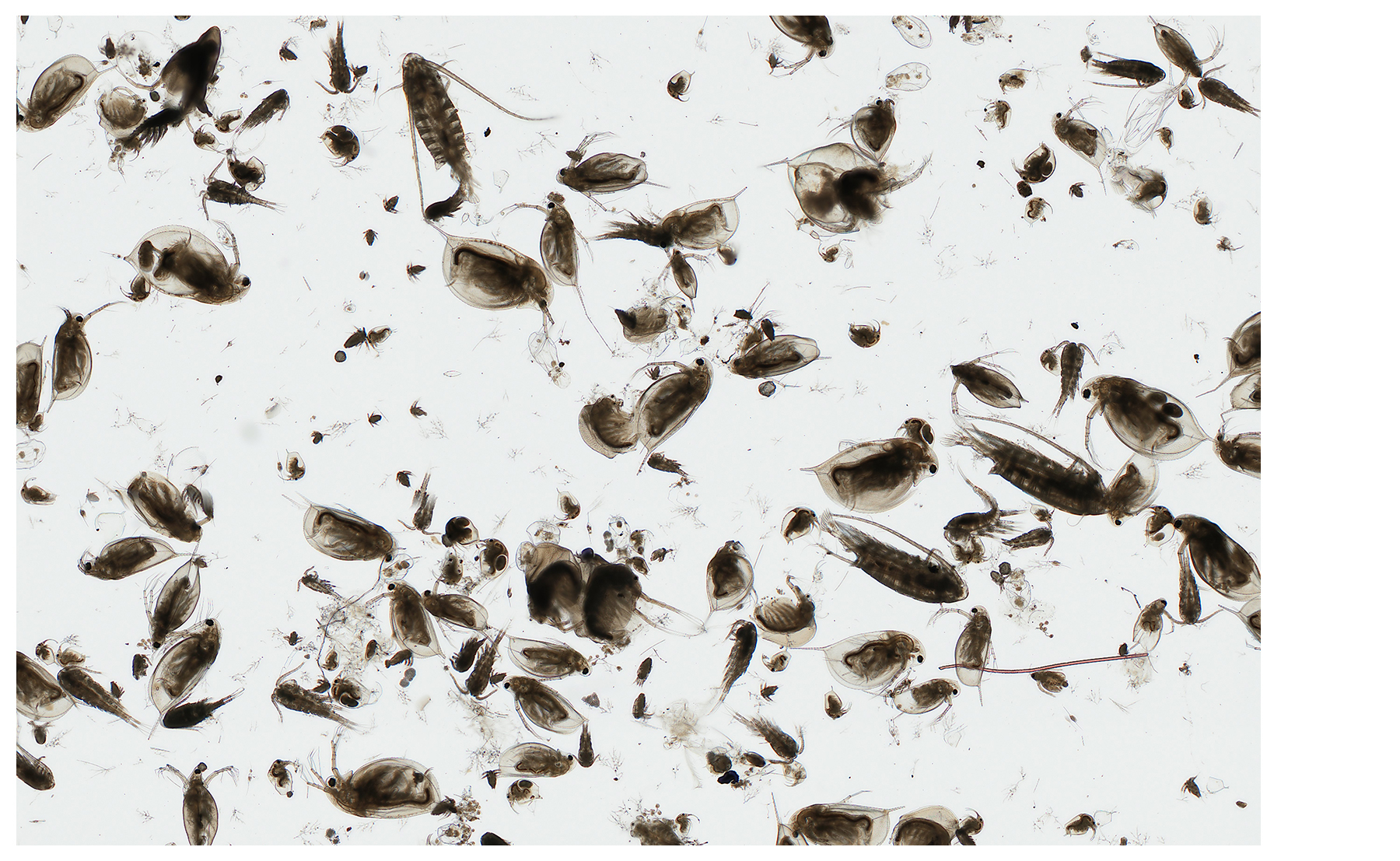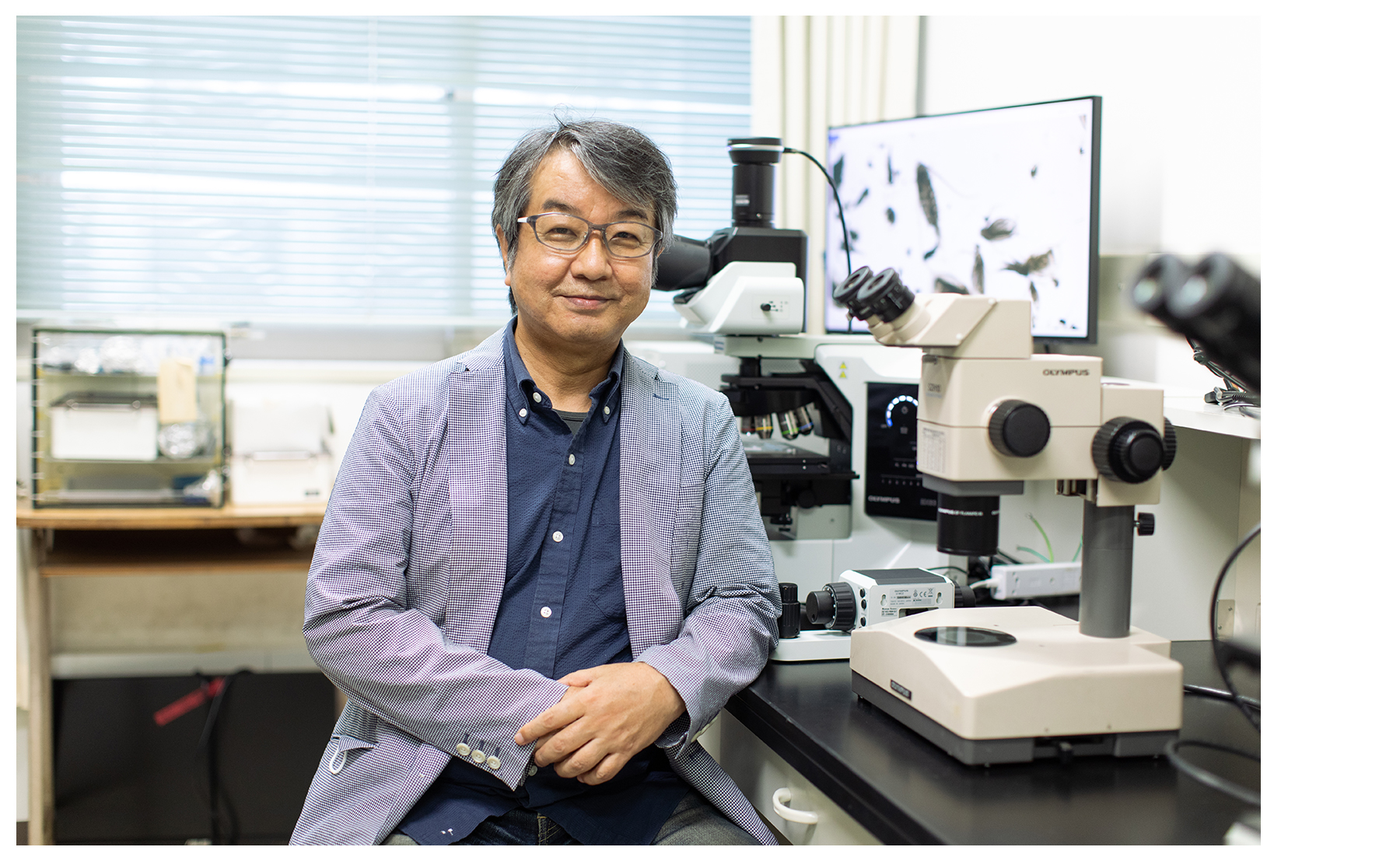I am doing various researches on aquatic life and ecosystems. Since I was a student, I have been studying plankton communities in lakes. I am analyzing why these communities differ depending on lakes from various perspectives, such as biological interactions and effects of surrounding forests and human activities and potential impacts of climate change. After the Great East Japan Earthquake, I am also investigating the ecological impacts of the tsunamis on the biological communities along the coast of Sendai Bay and their recovery process. It has become clear that the coastal communities are strongly influenced not only by biological interactions and environmental variables but also by chances. In addition to lake and coastal ecosystems, I am researching river metabolic rates from Hokkaido to Okinawa to project what will happen in river ecosystems in Japan in the future.
Among these, one of my favorite studies is on the phylogeny and biogeography of zooplankton species such as Daphnia (water flea). Since I am a biologist, autecology (studying everything of certain species) is the basis of any biological study. Since glaciers did not cover the Japanese archipelago during the last glacial period, plenty of phylogenetically old species, including endemic Daphnia species, are distributed in the freshwaters. There are also Daphnia species that have invaded Japan from North America recently. I am investigating ecological and evolutional factors determining the geographical distribution of these species, promoting the local adaptation and uncovering their genetic background.
Since plankton are the essential organisms that support aquatic life and ecosystems, the community changes will greatly impact our human society. Therefore, regular monitoring surveys are conducted on reservoirs and natural lakes throughout Japan. However, recently, human resources that can properly identify the planktonic species is decreasing. Consequently, specialists who can identify species that are under being endangered are becoming endangered. To the human resource shortage, I am developing an innovative image-analysis method using AI by collaborating with a professor of the Graduate School of Information Sciences. It is great fun to research organisms and communities in lakes and rivers because you can do fieldwork in various places worldwide, from high mountains to wilderness overseas.
When I was a high school student, I had the opportunity to snorkel in Okinawa and was attracted to marine life. Therefore, I went to a university with a diving club that introduced scuba diving for the first time in Japan. When I was an undergraduate student, I swam every day without attending the lectures. One day, I was trained to dive at night to progress my diving skills, but when I dive, countless small creatures were shining in the darkness, and I was fascinated by the beautiful sight. These were plankton! Then, I realized that plankton are essential organisms to support aquatic life and ecosystems, and I wanted to know more about these, so I entered the laboratory studying plankton.
However, after a while, I realized that I was vulnerable to ships, so I thought that it would not be a match in oceanography. According to the professor's advice in that lab, I started research on zooplankton in lakes. When I started my study, I found that zooplankton species composition was completely different depending on the lakes. When I asked the professor why it was different, the answer was vague that it might be because the water quality was different. Therefore, even though I was a student, I decide to make various hypotheses on my own and test these with field experiments, which was rare at that time. As a result, I found that the community structure was determined by the abundance of fish inhabiting.
Where there were many fish, the less vulnerable zooplankton species increased, and where there were no fish, the competitively superior species dominated. Like that, it was revealed that the community structure of lake plankton was regulated by the balance between predation and competition but not by water quality.
When I submitted the research to an international journal of Limnology and Oceanography, it was accepted. Moreover, I received several letters of response from worldwide (there was no e-mail at that time) and many requests for a reprint of the paper. I was surprised by these responses and realized (or might fall into the illusion) that my science can go through in the world. So, I feel good and continue to be a scientist till the present.
It's a lot of fun to unravel the reasons for things happen in nature. Curiosity about “why” is certainly important, but more important motivation is to have both imaginations on what is behind and creativities to make methods to solve that question. The professor's words are generally sloppy, so you should think of them as a clue to start your imagination without really accepting the words. However, it is necessary to know the knowledge so far and discuss the hypotheses you envisioned with someone for a good imagination. Curiosity, imagination, and discussion are essential sources of creativity for solving and understanding things that happen in nature.





